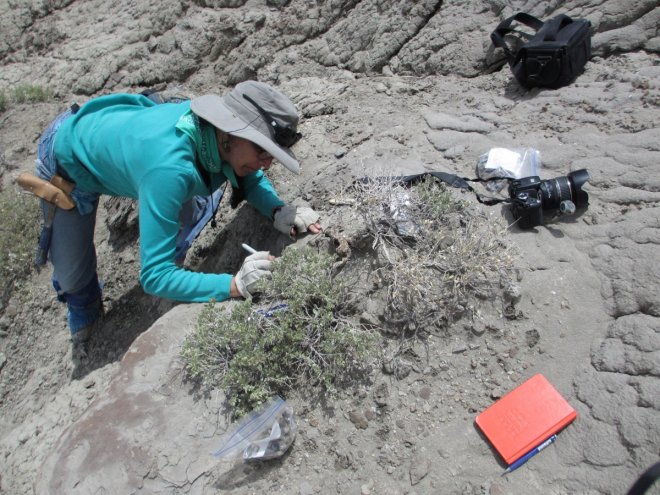
A recent study on dinosaurs' diet brought an astonishing fact into the limelight. Contrary to popular belief, all herbivorous dinosaurs were not strictly plant-eaters and often had a taste of meat. A recent study revealed that hadrosaurs, the herbivorous duck-billed dinosaurs, often chose to feed on crustaceans, which included crab, shrimp, and similar shelled water animals.
The research by Karen Chin of the University of Colorado, published in Journal Scientific Reports, states that crustacean shells and coniferous wood particles were found in 75 million years old fossilized fecal remains of the Hadrosaurs.
Moreover, crustacean shells were found in 10 samples of fossilized dinosaur droppings, also known as coprolites, in the Kaiparowits Plateau in southern Utah. This region is believed to be a favorite haunt of the duck-billed dinosaurs.
According to the researchers, the hadrosaur's bones and teeth structure were better suited to live in land close to fresh water. They are believed to have fed more on fern and conifers. The Kaiparowits plateau had an abundance of rivers and ponds and hence became an ideal place for Hadrosaurs.
Karen Chin told Reuters that dinosaurs would have eaten the crustaceans and decaying coniferous wood during their reproductive phase to aid their protein and calcium requirements.
Hadrosaur skull resembles a duckbill having beaks and specialized teeth for grinding plant parts. They are considered predecessors of present-day birds.
Two types of Hadrosaurs were common in the area during that time. The 33 feet (10 meters) long Parasaurolophus which had a long tubular head crest and the Gryposaurus with arched nasal crest, having a total of 39 feet (12 meters) length.
Researchers said that Hadrosaurs might have chosen to feed on decaying wood as it would have insects, worms and other smaller creatures which are rich sources of protein and calcium.
Not just the duck-billed dinosaurs, researchers also believe that several herbivorous animals chose to feed on smaller animals, insects, or bones during their breeding season and also to compensate their protein and calcium requirements.









